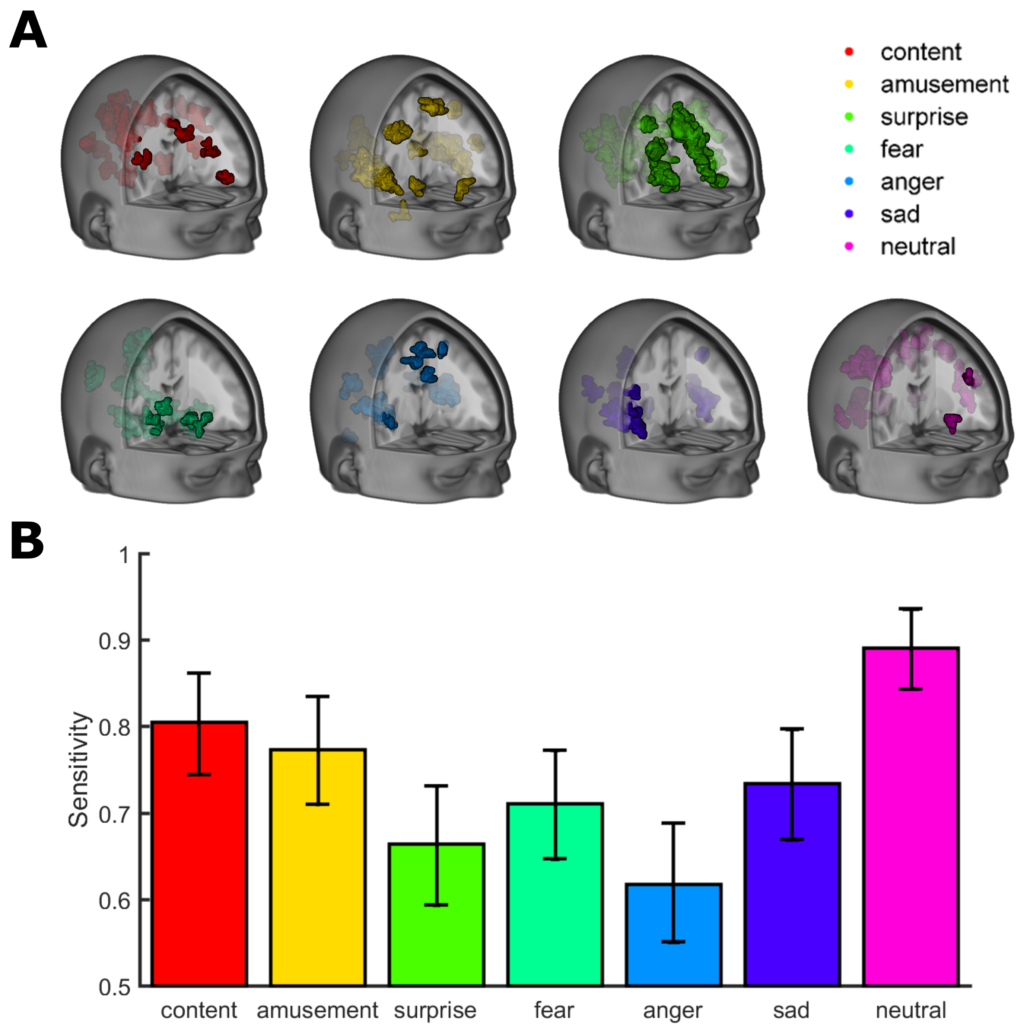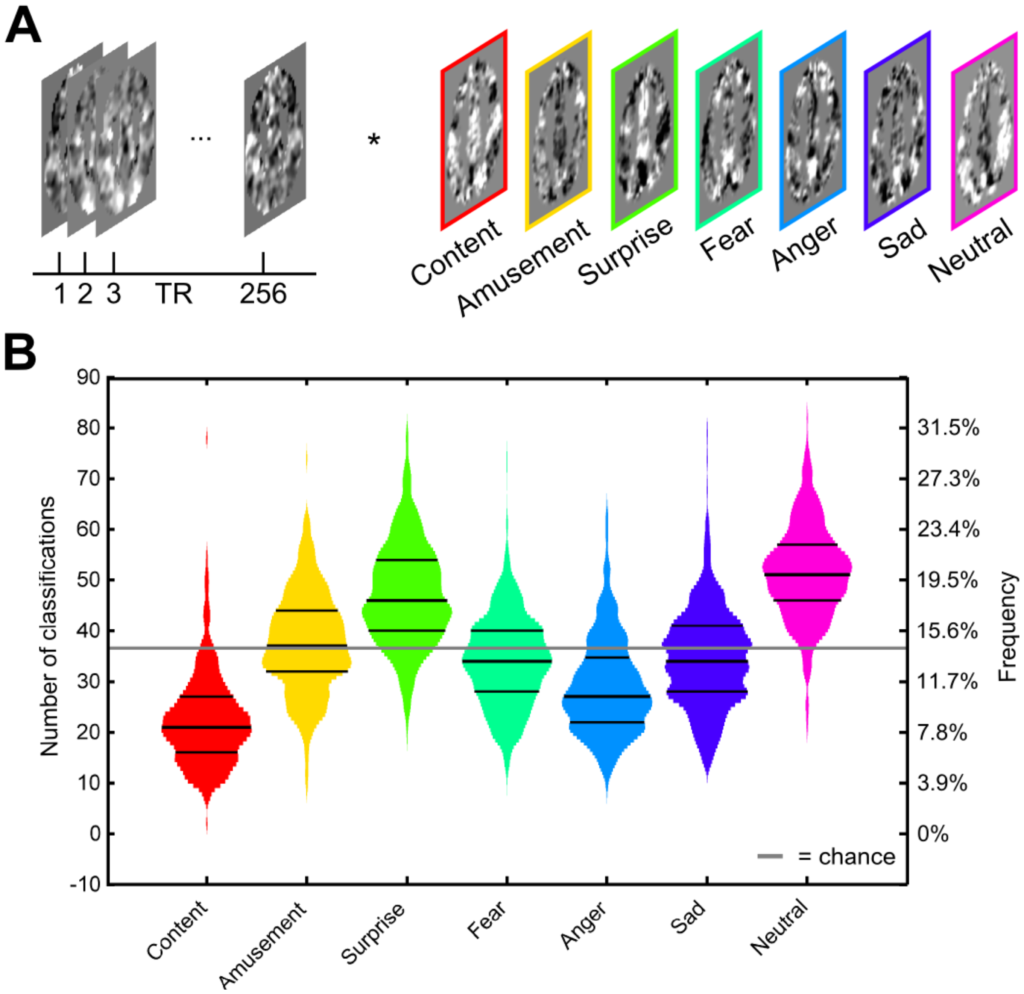A real exciting find!
By pure accident, I recently stumbled over an MRI study that was performed by researchers at Duke University’s Center for Cognitive Neuroscience in 2016.
I could not have asked for a more appropriate set of MRI tests to corroborate my functional brain model, called the Xzistor Concept brain model.
Professor Kevin LaBar, study co-author and head of the university’s neuroscience program made some comments to CNN reporter Ashley Strickland at the time, which immediately captured my interest. I realized the significance of simple statements like ‘asked study participants to rest and think about nothing’ and ‘letting their minds wonder’.
Those words might not mean much to AI researchers trying to simulate the mind and get artificial intelligence to the next level – but for me his words had special meaning. I knew he was talking about one of the most fundamental tenets of my brain model.
It was incredibly important for me to understand what this MRI study of emotions in the brain had found.
Letting the mind ‘wonder’ or ‘freewheel’ does not only form the point of departure for thought and problem-solving performed by my model, but also explains how emotions and intelligence are integrated within the human mind.
But first let’s take a look at what Professor LaBar and his team had found:
In short, this is what they did: They encouraged study participants to enter an MRI scanner and then ‘try to think about nothing’ while they were in the machine. As this was happening, they recorded the brain patterns (in color) associated with the unforced emotions spontaneously generated in the minds of the participants. These they compared with a set of ‘reference color patterns’. The reference emotion patterns were collected earlier from other individuals which were asked to watch movies or listen to music. The research team defined a few basic color patterns prevalent during specific emotions e.g. surprise, fear, anger, sadness, amusement and neutral. Although the participants were trying to think of nothing specific, different emotions seemed to come and go in their minds while in the scanner, separated by periods of what looked like an emotionally ‘neutral’ state.

Parametric maps indicate brain regions in which increased fMRI signal informs the classification of emotional states. Image taken from original research article Decoding Spontaneous Emotional States in the Human Brain
(https://doi.org/10.1371/journal.pbio.2000106.g001).
[Credit: Kragel PA, Knodt AR, Hariri AR, LaBar KS (2016)
The conclusion from the investigation as explained in the CNN interview by LaBar is important – he believes that, by using such MRI brain scans to show emotions in colour, a comparison can be made to see if a treatment regime had changed a patients ‘rest state’ emotional signature. For instance when a patient who has been suffering from depression reports an improvement, the current scans can be compared with previous scans to remove possible biases and uncertainties for the patient – and to inform further treatment options. It could further assist with assessing children with mental disorders or even assess patients in comas.
Why is this so important for AI research?
What LaBar and his colleagues have found is accurately explained by my functional (mathematical) model of the brain.
What they choose to call ‘thinking about nothing’ or ‘letting your mind wonder’ is crucial to everything my brain model is predicated upon – including how it generates intelligence and emotions. They are talking about a phenomenon in the brain which I refer to as ‘Threading’. This seemingly unimportant process becomes the basis of how learned information (knowledge) is used by the human brain to solve problems – and it is the process I have used to build robots and artificial agents that can think and innovate by themselves. By ‘directing’ this Threading process, the brain learns to solve problems – this is what we as humans might refer to as ‘thinking about a problem’ and this forms the basis of how I define ‘intelligence’ in my model. Basically we learn to solve problems by ‘directing’ the Threading process – focusing this constant random recollection of associations towards solving a problem is no different from how we force a web browser to only return content relevant to our search terms and not waste time by providing unrelated websites.

Procedure for classification of resting-state data. Scores are computed by taking the scalar product of preprocessed data and regression weights from decoding models. Image taken from original research article Decoding Spontaneous Emotional States in the Human Brain (https://doi.org/10.1371/journal.pbio.2000106.g001).
[Credit: Kragel PA, Knodt AR, Hariri AR, LaBar KS (2016)
So where do the emotions come in which they have detected?
Here is the beauty of how my brain model explains what they have detected: Every time an association is recalled by my model, it reevokes (regenerates) the net subjective emotion that was recorded when the association was formed. No memory is recollected without its emotion also being reevoked. So even when robots running my mind model tries to think about nothing, their artificial minds will keep on ‘Threading’ through associations and emotions will be recalled one after the other. Some of the recalled emotions will be so low in intensity that they will not be noticed by the robot – similar to what LaBar and his colleagues observed on the MRI scans and referred to as emotionally ‘neutral’ states.
I am personally very excited about these test results as my model is corroborated by exactly what the research team had found – it is nothing other than my process of ‘Threading’.
There is so much more that can be learned from these MRI tests as these effectively verify some of the most important aspects of the Xzistor Concept brain model. It gives credence to two new mathematical definitions of intelligence and emotions described by the model – something the neuroscientific and AI communities had been in search of for decades and are still searching for at the time of this article.
This constant ‘at rest’ recalling of associations and stored emotions, this process of Threading (we sometimes just refer to it as daydreaming) does not stop when we fall asleep. All that happens is that our eyes close and our motor movement is inhibited. And we start to dream – which is nothing other than just the same Threading process doing its thing over and over again in our brains.
Here is how Threading is described in my guide Understanding Intelligence: The simple truth behind the brain’s ultimate secret:
“When the brain is relaxed and do not have an immediate problem to solve, it will start to daydream. We can say this is equivalent to Threading. Just like Joe’s program jumped from book to book using some shared link word, our brains will start linking memories using some shared aspect (similar to a link word). One after the other our brains will present these memories to us in the form of recalled visual images, whilst also re-evoking the emotions associated with these images.”
Looks familiar? It is exactly what the MRI tests have shown.
I now want to invite you to investigate the brain by coming at it from another angle – a functional approach that is simple to understand and different from everything that is out there at the time of this article.
Follow the set of free (and easy to read) links below to get familiar with the Xzistor Concept brain model and understand why it provides a theoretical basis for the observations Professor LaBar and his team had made. If you are interested in AI, you will also learn how this model allows us to build robots and virtual agents with intelligence and emotions (actual feelings) that are principally no different from humans.
Start by reading the CNN article by Ashley Strickland on Professor LaBar and his team’s MRI ‘emotion scan’ research here:
https://edition.cnn.com/2016/10/06/health/spontaneous-emotions-brain-scans/index.html
Now read my free guide explaining the brain process of ‘Threading’ (I use a simple story about a bookshop owner to explain this concept in the guide – real easy reading).
The bottom line from this is that Threading is a process by which associations are spontaneously recalled by the brain, and with every association the net emotion is also recalled.
If you are interested, you can now read how subjective emotions are generated in the brain as explained in my free guide: Understanding Emotions: For designers of humanoid robots:
You will now start to understand why I say the Xzistor Concept brain model can principally explain all that happens in the brain – functionally that is, which means we do not need to get into the biology of neurons and neural networks to understand the simple high-level logic of the brain.
If you have more questions about my brain model, feel free to head over to the Frequently Asked Questions section on the Xzistor LAB website. Videos of the model built into robots and simulations are available on YouTube.
Up for even more?
Here is a final paper that explains what happens when we use the Xzistor Concept brain model to go in pursuit of the elusive concept of Artificial General Intelligence (AGI) and how it can help neuroscientists and AI researchers understand the brain and build robots with intelligence and emotions:
Thank you for your interest – and I hope you will always stay fascinated by the brain!
